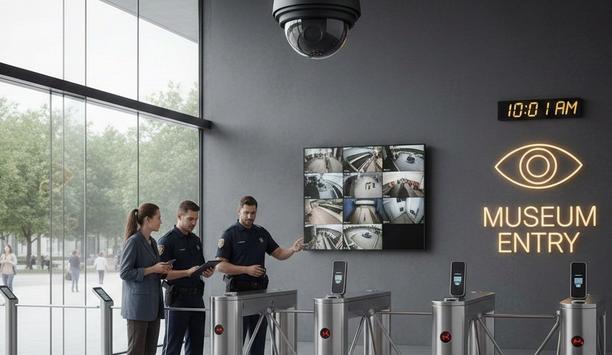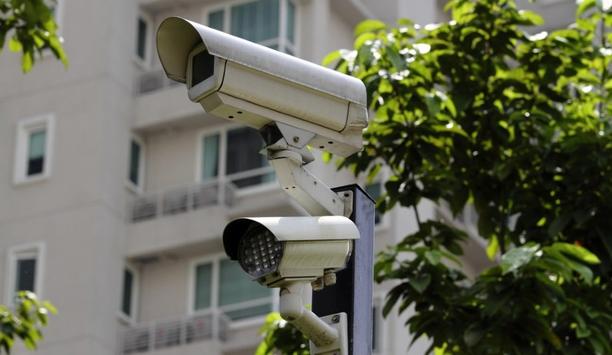Check Out Our Special Report On Casino Security
What Will Likely Be The Most Important Technology Development In The Security Marketplace In The Second Half Of 2023?
- AI advancements dominate security technology development in late 2023.
- Security marketplace sees significant AI-driven innovations in the second half of 2023.
Editor Introduction
Time flies in the busy world of security, so it’s no surprise that the midpoint of 2023 comes before know it. Let’s pause after the first half of the year to look ahead at what can expect during the second half (Hint: It’s all about AI). We asked this week’s Expert Panel Roundtable: What will likely be the most important technology development in the security marketplace in the second half of 2023?
Already seeing more end users demand integration and orchestration technology that can make programs more efficient and effective with limited or dwindling resources. This means tech that measures how a security program is working, realistically painting a clearer picture of how it ties into the business as a whole. Going even further is the idea that this integration is facilitating the continued convergence of cyber and physical security, which the industry has been talking about for a while but hasn’t fully grasped. Technology that prioritizes creating an AI orchestration layer that provides intelligent, efficient, and scalable physical security without the need for new hardware will be an important development for the industry in the immediate future.
In the second half of 2023, one of the biggest challenges that security teams will face is separating critical intelligence signals from the noise. The rise of advanced technology like generative AI is exacerbating this problem with the creation of “deep fake” text and images that may be inaccurate and inundate security teams with well-crafted deceptions. Due to this, will see continued innovation in security technology that can connect critical intelligence and help security teams conduct analysis to sift through the noise to focus on threats that are of the highest priority. With technology having the ability to connect various sources, teams can more easily verify intelligence as opposed to having to rely on a single source. Organizations continue to face a heightened threat landscape; thus security teams must be able to collect intelligence and connect the dots to help make better business decisions and protect their organization.
As AI becomes a topic of debate across all areas of business, the rapid ongoing development of AI Chatbots such as ChatGPT, Bard, and others may impact the security marketplace. The release and deployment of GPT-4 with its estimated 100 trillion parameters will accelerate debate across the world about how to regulate and ethically watch over the evolution of such powerful technology. It’s easy to imagine a scenario where AI, and its derivative disciplines, become something of a dirty word as bad actors use it to mount increasingly sophisticated cyber-attacks. For this reason, the second half of 2023 will be a time to educate the security market, customers, and representatives about potential cyber threats, but also to dispel myths about what this technology can and can’t do. It’s also important to remember that the same tools used to mount attacks can also be used to help protect networks.
Like many industries and sectors, one of the biggest potential technological developments in the security world in the second half of 2023 and beyond will come from the rapid developments in the world of AI and Machine Learning. This technology has the ability to offer further enhancements and improvements to software and hardware solutions by approaching development with unfiltered logic. AI and Machine learning has so many potential applications for industry, from helping to develop the security technology itself, to analyzing security data to find better ways of deploying systems or finding threat trends. From own marketing point of view, there are also potential applications for analyzing market data and helping to target activities towards the right people and organizations, to help drive demand and better accommodate the needs of customers.
AI is not a new term for the security industry. Seeing the developments of AI for quite some time, with the addition of analytics in IP cameras and access control subsystems that are using AI to help make smarter. Now AI has become a household term and it's available to everyone, and the security industry also needs to start to use it as part of its business operations to help become more efficient. Able to use AI to help with proposals, contracts, and site surveys. In the near future, expect to drop a set of plans into an AI-based system that could quickly turn around a survey and full set of drawings and tell where cameras should go based on a number of variables, such as lighting, geography, and crime rates. It’s going to become important that embrace AI and how it can make companies better. If don’t embrace the future, going to fall behind.
Any solution that can successfully combine AutoGPT, AgentGPT, or any similar AI task-chaining technology with a code execution environment and hard target boundary will have a substantial edge in evaluating the security of their own products and solutions. Limiting the scope to “their own products and solutions” intentionally as this is essentially automating and weaponizing artificial intelligence to achieve broad cybersecurity attack goals, much like a red team or an advanced persistent threat (APT). There are clear safety issues here, in that an automated AI with a goal of a capture-the-flag operation could use any technical means necessary. Human oversight of the AI would be necessary, as well as time for the defenders to remediate the issues identified, which may not be based on previously observed MITRE ATT&CK patterns. However, this also has the potential to be rather dangerous, as an AI without moral or ethical obligations and no sense of allegiance to a company or country could pose a considerable risk if there are no targeting constraints.
Since ChatGPT was released, it has been front and center in every conversation across the tech industry. While AI is certainly not new, the release of ChatGPT has taken AI to a new level and opened the door to several new challenges and opportunities for all organizations. For example, the future of identity verification will be largely defined by the use of biometrics, and AI has made biometric facial matching almost infallible. It’s exciting to consider the possibilities that come with AI, but there are also risks that must be addressed. As look ahead in the security marketplace, this means the next six months will be critical for advancing technology and policies that support and mitigate risks of AI use. Establishing training and best practices for people using AI will also be extremely important to help reduce risks and biases and improve accuracy.
The application of artificial intelligence in video surveillance and analysis will continue to grow in the second half of 2023. Through deep learning and computer vision technology, AI can achieve more accurate and efficient video content analysis, including personnel recognition, anomaly detection, and object tracking. AI's machine learning algorithms can also identify potential threat patterns and predict future security affairs by analyzing large amounts of security data. AI can be used for automated security operations and response, reducing dependence on manual intervention. To better meet real-time security needs and reduce latency, AI will be increasingly integrated into edge devices and sensors, forming edge AI. AI's autonomous decision-making capabilities will find broader applications in the security field. In terms of the cloud, security solutions will provide more robust security measures, including data encryption, identity authentication, access control, and auditing. These measures will strengthen data protection in cloud environments and safeguard user privacy. With the continuous strengthening of data protection regulations, cloud security solutions will enhance support for security compliance and data protection.
Editor Summary
Every panelist who elected to answer our question mentioned artificial intelligence (AI) as a prominent technology in the second half of 2023. AI has already been the center of much discussion during the first half of the year, and we can expect the dominance of the topic to continue throughout 2023 and beyond. AI yields both transformative new capabilities and new threats to security. We as an industry must become well-informed about both.
- Related companies
- TDSi
- Anviz Global Inc.
- Entrust Inc.
- Care Security Systems
- i-PRO
- Ontic Technologies
- HiveWatch
- Hyperproof
- View all news from
- TDSi
- Anviz Global Inc.
- Entrust Inc.
- Care Security Systems
- i-PRO
- Ontic Technologies
- HiveWatch
- Hyperproof
Expert commentary
Security beat
The Key To Unlocking K12 School Safety Grants
DownloadHoneywell GARD USB Threat Report 2024
DownloadPhysical Access Control
DownloadThe 2024 State Of Physical Access Trend Report
DownloadThe Security Challenges Of Data Centers
DownloadKentixONE – IoT Access And Monitoring For Data Centers
Climax Technology HSGW-Gen3 Modular Smart Security Gateway
Delta Scientific DSC50 ‘S’ Barrier: Portable, Crash-Rated Vehicle Mitigation Solution




























